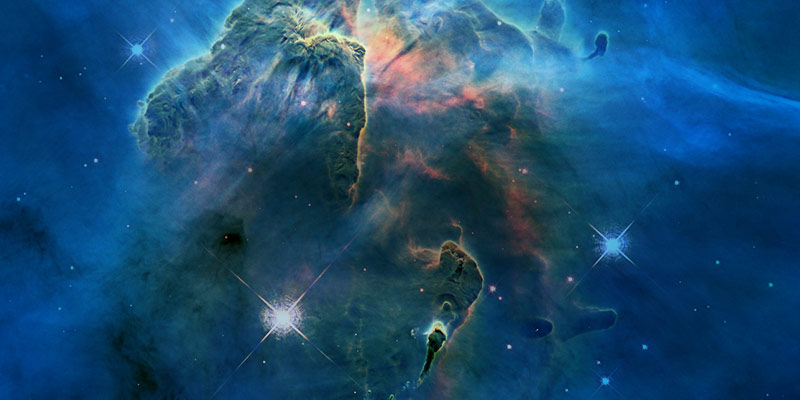Anyone who happened to stroll through Gagarin Park (named after the Soviet cosmonaut Yuri Gagarin) in Dnipro (Ukraine) sometime between October and December in 2021 was greeted with a colourful and fascinating sight – 23 one-and-a-half meter tall rocket sculptures. They could also find a 24th mysterious, virtual rocket. These sculptures, “art rockets”, were painted by artists from all over Ukraine, including Zaporizhia, a partner city of Linz.
Most art rockets feature aspects, images and symbols of Ukrainian culture and history or space-related themes and space-related scientific achievements of humanity, such as interplanetary travel, rockets, and satellites. The artistic styles that adorn the rockets include a large variety of techniques, such as graffiti, traditional painting combined with mixed media, the “Karakulegrafiya” technique, and others.
The art rocket sculptures were later sold at a charity auction, and the funds raised will be (or have been?) used to create a children’s sports and play complex in Gagarin Park.
Exhibit creators were chosen based on competition. Each artist worked in their own style, so the diversity of depictions is amazing: Maria Primachenko motifs, neocubism, street art, and even the “caraculegraphy” technique. The artists’ works reflect Ukrainian culture and history and incorporate Ukrainian images and symbols. The artworks also honored Ukraine’s association with space and scientific achievements.
Rocket gallery (selection)
>> We Carry Life and Love
by Dasha Vernova ( Kyiv) and Valeriia Honcharova.
The artist of this rocket is convinced that the development of the space industry and new technologies must be environmentally friendly and help us live a peaceful life. Therefore, her popular character “Doggy the Wolf”, known from her books and many memes, goes into space together with his friends to bring peace and love.
>> FANTASTIC BEASTS BY MARIA PRYMACHENKO
by Anna Pavliuk (Volyn Oblast)
Anna Pavliuk’s art rocket showcases a creative adaptation of the imagery of world-famous folk artist and representative of naive art, Maria Primachenko. The UNESCO declared 2009 the year of Prymachenko.
>> WITH PETRYKIVKA PAINTING TO THE STARS
by the Dnipro Station of Young Technicians
This rocket features traditional Petrykivka paintings, as seen on the walls of huts in the village of Petrykivka. In 2013, UNESCO recognized “Petrykivka decorative painting as a phenomenon of the Ukrainian ornamental folk art”, and thus as Intangible Cultural Heritage of Humanity. The traditional Petrykivka ornament on a modern art object symbolizes the continuous connection of generations, historical heritage and modern achievements. This artwork was created by the students of the Petrykivka art club of the Dnipro Station of Young Technicians.
>> ANGEL OF UKRAINE
by ZDESROY / Valerii Kolor (Dnipro)
The popular urban artist Zdesroy, known in Ukraine and abroad for his street art, depicted an angel in a space suit, holding up a spraying can, guarding the cultural heritage of Ukraine in all its diversity: from ancient traditions to the voice of modern streets.
>> TOGETHER TO THE STARS
by Alyona Voloshyna (Dnipro)
Humans have always dreamed of reaching the stars. This interest unites both young dreamers and adult researchers. Alyona Voloshyna’s work symbolizes the invaluable contribution of pioneers – astronomers, scientists, engineers, testers – in space exploration, including Ukrainian pioneers. Alyona Voloshyna is a young artist from Dnipro who has won numerous professional competitions.
>> DREAMS
von Olha Prysiazhniuk (Oblast Saporischschja)
Linz is not only home to the Ars Electronica Center, which in turn is ESERO Austria’s home, but also a partner city of Zaporizhzhia. The rocket below was painted by an artist from Zaporizhzhia Oblast.
Dreams help us move through life. The girl on this art rocket is a symbol of new generations, inspiring everyone to look forward and upward, into an endless and fascinating Universe.
>> UNITED WORLD
von Taras Bilous (Dnipro)
During the vortex of rapid scientific and technological progress, this artwork calls on us not to forget about the environmental situation on our home planet.
About Noosphere
Noosphere is a non-governmental, non-commercial organization focused on promoting STEM.
Their goals are, among others, to create favourable conditions for knowledge sharing among young people, to increase awareness of advanced research, technologies, and innovations, to promote scientific work and nurture the intellectual potential of Ukrainian society.
Noosphere regularly organizes educational events, conferences, seminars, workshops, competitions, and other forms of knowledge and information sharing. They do research in various scientific fields and provide grants to young talents in science.
Some particularly interesting projects, apart from Art Rocket Park, is the Noosphere Space Art Challenge for young children and the StarTrack Competition, which specifically features CanSats as one of its competition areas!
Sources
Our main sources of information for this post were texts on the Noosphere and Gagarin Park websites. Some parts were translated from Ukrainian into English, some parts copied from the websites, and other parts edited or paraphrased by ESERO Austria.
Notes
Given the circumstances, it was important to us to present a space-related artwork from Ukraine as “Artwork of the Month”. The project “Art Rocket Park” convinced us with all its colorfulness and creative joie de vivre, as well as the artists’ palpable enthusiasm for space travel and science. Moreover, there are clearly certain parallels between the tasks and goals of ESERO Austria and those of the NGO Noosphere, as has already been mentioned earlier. A perfect match, or so we thought.
However, in the course of our research, it became clear that during times of war, cultural institutions and curators may be confronted with certain contradictions, which they have to come to terms with. Thus, for the incorporation of the “Art Rockets” into our Art & Space gallery, even more reflection and more complex considerations were necessary than was initially anticipated. A concrete statement can be found on the Ars Electronica Blog, where this topic has been addressed in great detail.
















